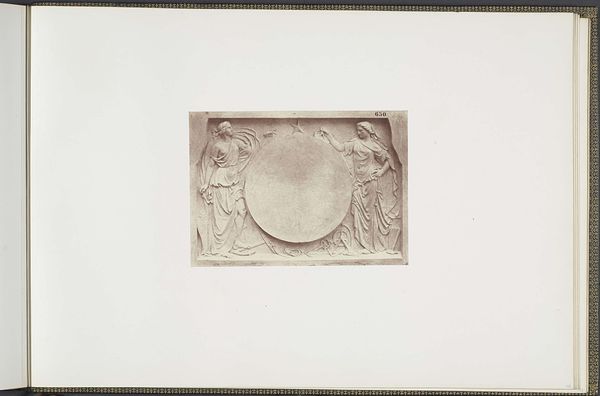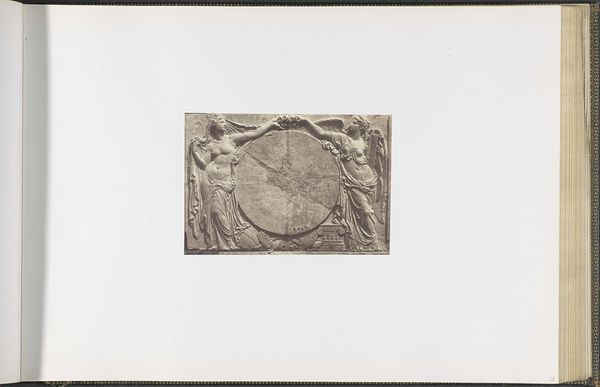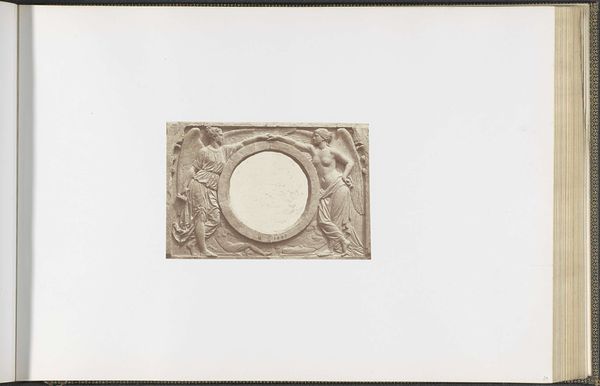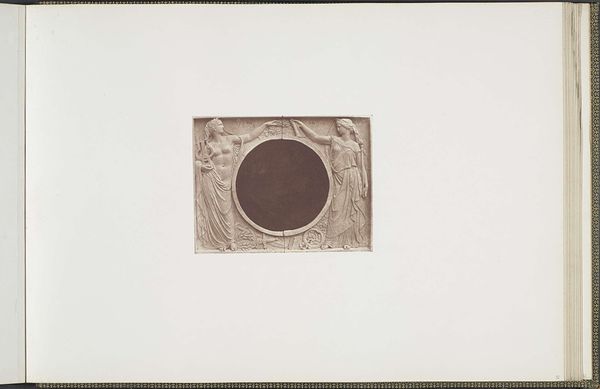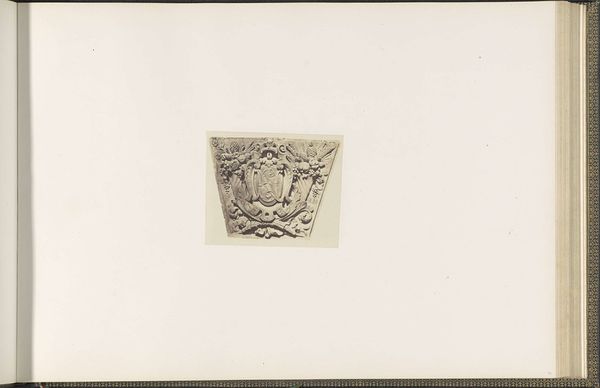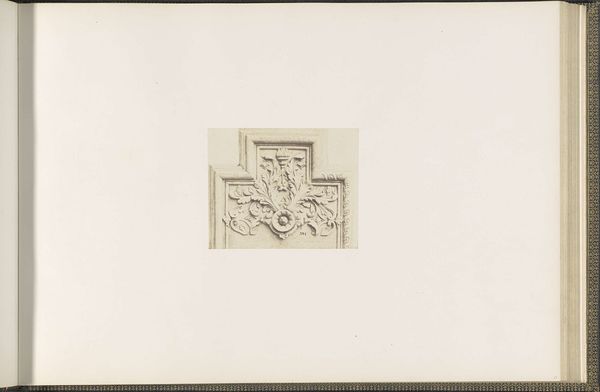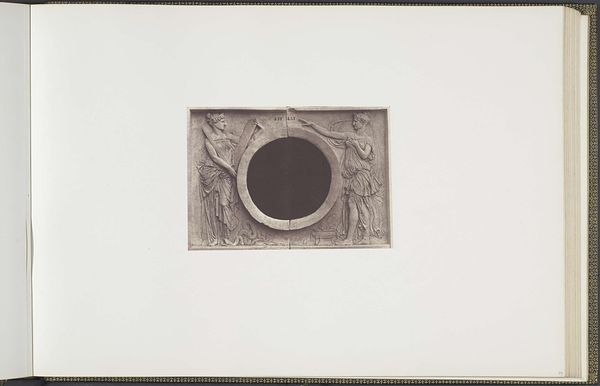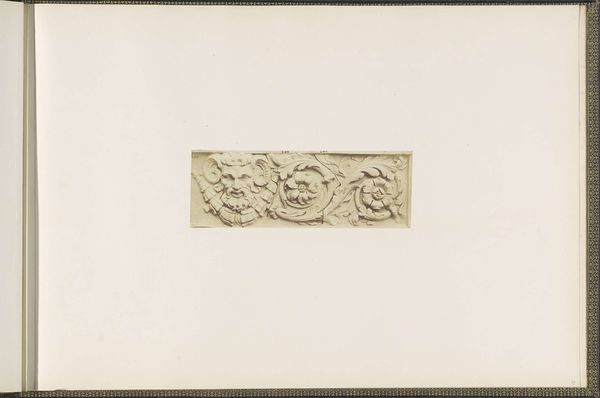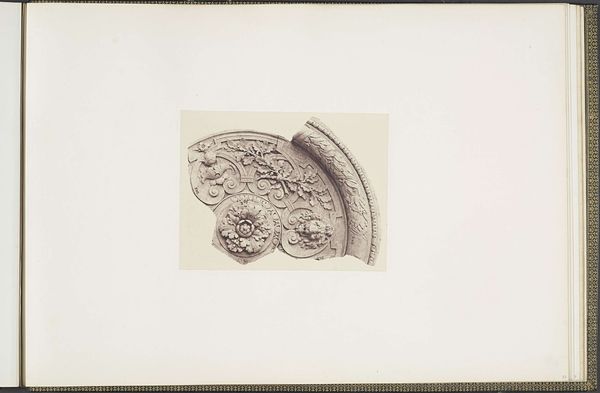
Gipsmodel voor beeldhouwwerk op het Palais du Louvre: "L'Etude et le Silence" door Georges Diébolt c. 1855 - 1857
0:00
0:00
edouardbaldus
Rijksmuseum
print, relief, photography, sculpture, gelatin-silver-print
#
portrait
#
neoclacissism
#
ink paper printed
# print
#
relief
#
photography
#
ancient-mediterranean
#
sculpture
#
gelatin-silver-print
#
history-painting
#
academic-art
Dimensions: height 378 mm, width 556 mm
Copyright: Rijks Museum: Open Domain
Curator: What an interesting juxtaposition we have here. This gelatin-silver print captures a plaster model—it’s Edouard Baldus’s photo of Georges Diébolt's “L'Etude et le Silence”, Study and Silence, intended for the Louvre, dating from around 1855-1857, currently held at the Rijksmuseum. It's quite the echo of history, isn't it? Editor: My first thought? Muted and contemplative. The monochrome palette evokes a sense of antiquity, doesn’t it? The shallow depth of field isolates the sculpture in the image, making the composition feel...almost timeless. Curator: Indeed! Baldus seems drawn to the academic tradition inherent in neoclassicism—its forms, themes, the very idea of referencing a sort of golden age... What intrigues me is how this *reproduction* alters our perception of Diébolt’s sculpture, in fact how this echoes history through different materials: stone, plaster, silver gelatin and ink! Editor: You’re right! Photography almost flattens it; it abstracts form. And the theme! Study and Silence—such neoclassical virtues! Do you think the original setting on the Louvre enhanced this? The round empty cartouche in the center hints at this potential. Curator: Oh, undeniably. That blank space *demands* interpretation. And consider its context at the Louvre – imagine visitors encountering it in dialogue with other artworks—power, patriotism... Editor: Right, academic art was not afraid to stage meanings in very pronounced, almost didactic way! Now though, reproduced here on this silvery gelatin, separated by medium and time, its virtues may sound a bit empty for us today, like its cartouche, maybe that is on us… Curator: Well said! Baldus, perhaps unwittingly, provides us this moment to contemplate. What does the dialogue between “Study” and “Silence” signify to a modern eye? How are these classical themes even *used*? And, do these depend on specific media and timeframes to obtain new relevance? Editor: Fascinating questions... and isn't it wonderful how this quietly powerful image provokes such musings?
Comments
No comments
Be the first to comment and join the conversation on the ultimate creative platform.
